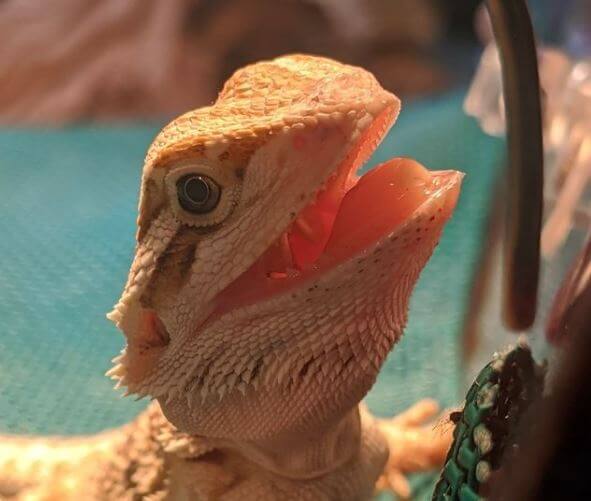How much does a bearded dragon cost
How much does a bearded dragon cost: Bearded dragons: captivating creatures that have captured the hearts of reptile enthusiasts worldwide. With their unique appearance and gentle demeanor, it’s no wonder these scaly companions have become increasingly popular as pets.
But before embarking on the journey of owning a bearded dragon, it is essential to understand the factors that contribute to their overall cost. From acquisition to habitat setup and ongoing care, investing in a bearded dragon entails more than just purchasing the reptile itself.
A Brief Overview of Bearded Dragons as Popular Pets
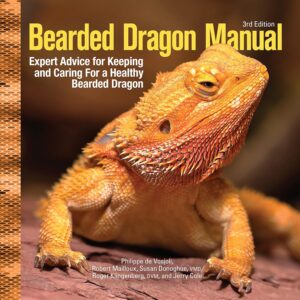 The allure of bearded dragons: These enchanting reptiles originate from Australia and belong to the Pogona genus. The most common species kept as pets is the Inland or Central Bearded Dragon (Pogona vitticeps).
The allure of bearded dragons: These enchanting reptiles originate from Australia and belong to the Pogona genus. The most common species kept as pets is the Inland or Central Bearded Dragon (Pogona vitticeps).
Renowned for their distinctive spiky appearance, docile temperament, and relative ease of care compared to other reptiles, they have gained popularity among first-time reptile owners and experienced enthusiasts alike. Bearded dragons are known for their ability to develop strong bonds with their human caretakers.
They display sociable behavior and often enjoy interaction outside their enclosures. Their calm nature makes them an ideal choice for those seeking a reptilian companion with whom they can form a close relationship.
The Various Factors That Contribute to the Cost of Owning a Bearded Dragon
A comprehensive understanding of costs: While bearded dragons are relatively affordable compared to some exotic pets, it is crucial to consider all aspects that contribute to their overall cost before bringing one into your home. Several key elements influence ownership expenses:
Acquisition cost: The initial investment required for obtaining a bearded dragon varies depending on the source and the morph (genetic variation) desired.
Habitat setup cost: Creating an appropriate and comfortable environment for your bearded dragon involves purchasing various supplies, including enclosures, lighting fixtures, heating equipment, substrate materials, and decorative elements.
Feeding and nutrition cost: Bearded dragons have specific dietary requirements that include live insects, vegetables, and fruits. The ongoing costs associated with providing a nutritious diet should be factored into the overall expenses of owning a bearded dragon.
Veterinary care cost: Routine check-ups, potential health issues, vaccinations, and preventative care measures are essential aspects of responsible pet ownership. These veterinary expenses should be considered when calculating the long-term costs of owning a bearded dragon.
By acknowledging these contributing factors from the outset, prospective owners can better prepare themselves for both the financial commitment and joyous experience that comes with welcoming a bearded dragon into their lives.
Acquisition Cost
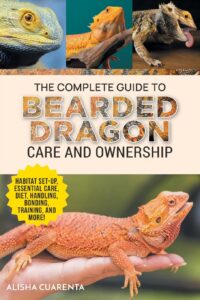 Researching reputable breeders vs. pet stores or adoption centers: When considering acquiring a bearded dragon, it is crucial to evaluate the options available for obtaining one.
Researching reputable breeders vs. pet stores or adoption centers: When considering acquiring a bearded dragon, it is crucial to evaluate the options available for obtaining one.
Reputable breeders, pet stores, and adoption centers are the primary sources to consider. Researching reputable breeders allows you to ensure that you are getting a healthy and well-cared-for bearded dragon from a knowledgeable source.
Breeders often specialize in specific morphs or bloodlines, giving you access to a wider variety of choices. On the other hand, pet stores and adoption centers can also provide opportunities to find your new companion.
Pet stores typically offer convenience and accessibility, as they are easily found in many locations. However, it is essential to assess their reputation and inquire about their sourcing methods before making a purchase.
Reputable breeders often have extensive knowledge about bearded dragons and can provide valuable guidance on their care requirements. They are likely to offer ongoing support even after the purchase, ensuring that you have all the necessary information for keeping your bearded dragon healthy and happy.
Pet stores may offer more affordable prices compared to reputable breeders but might lack the same level of expertise when it comes to care recommendations. Additionally, pet store staff may not always have in-depth knowledge about individual dragons’ backgrounds or genetics.
Adoption centers present an excellent choice for those interested in providing a home for rescued or abandoned bearded dragons. By adopting from these centers, you not only save an animal’s life but also contribute to reducing overcrowding in shelters.
The price of acquiring a bearded dragon can vary depending on several factors such as lineage, morph type, age, size, and overall health condition. Reputable breeders often charge higher prices due to their investment in selective breeding programs, specialized care, and maintaining high standards. The price range can start from around $50 for a basic morph and go up to several hundred dollars for rarer or more unique morphs.
Pet stores tend to offer bearded dragons at slightly lower prices, with the average cost ranging from $30 to $100. However, it is crucial to carefully assess the health and origins of these dragons before making a purchase.
Adoption centers generally have more affordable adoption fees that can range from $20 to $80. While specific morphs may not be readily available in adoption centers, you can still find healthy and beautiful bearded dragons seeking a loving home at a lower cost compared to other sources.
Bearded dragons exhibit an astonishing array of morphs and color variations, which contribute to their unique appearances and price differences. Morphs are genetic variants that result in distinct physical characteristics such as color patterns, scales’ texture, or eye color. Some popular morphs include the citrus tiger, hypo leatherback, translucent, and red phase.
The price variation between different morphs arises due to their rarity or demand within the reptile enthusiast community. For example, a common or “normal” bearded dragon may have relatively lower pricing compared to more exotic or rare morphs like paradox or silkback.
The latter examples can command significantly higher prices due to their scarcity or complex genetic combinations. It’s important to consider that while acquiring a specific morph might come at an additional cost initially, it is essential not only for aesthetic reasons but also for contributing towards responsible breeding practices and preserving genetic diversity within captive populations of these unique reptiles.
Habitat Setup Cost
Enclosure options for bearded dragons (glass tanks, PVC cages, etc.)
When it comes to setting up a habitat for your bearded dragon, you have several enclosure options to consider. Glass tanks are the most commonly used enclosures due to their availability and affordability.
These tanks provide good visibility and can be easily customized with various accessories. However, glass tanks may not retain heat as efficiently as other materials, so you may need to invest in additional heating equipment.
Another popular option is PVC cages, which are specifically designed for reptile habitats. These cages are often more expensive than glass tanks but offer better insulation and heat retention properties.
PVC cages are also lightweight and easy to clean, reducing maintenance efforts. Additionally, they come with built-in ventilation systems that ensure proper airflow within the enclosure.
Each enclosure type has its pros and cons. Glass tanks are generally more budget-friendly and widely available but require extra attention in terms of heat retention.
On the other hand, PVC cages provide superior insulation and convenience but come at a higher cost. Consider your budget and preferences when choosing the best enclosure option for your bearded dragon.
Essential equipment for a proper habitat setup
Creating a healthy environment for your bearded dragon requires specific equipment that caters to their unique needs. Firstly, heat lamps play a crucial role in providing proper temperature gradients within the enclosure.
Bearded dragons require two types of temperatures: a basking spot with temperatures around 95-105°F (35-40°C) and cooler areas around 75-85°F (24-29°C). Heat lamps such as ceramic or incandescent bulbs can help achieve these temperature ranges effectively.
In addition to heat lamps, UVB lighting is essential for your bearded dragon’s well-being. These lights simulate natural sunlight by providing the necessary ultraviolet B (UVB) rays required for the synthesis of vitamin D3.
Proper UVB lighting prevents metabolic bone disease and ensures normal growth and development in bearded dragons. To maintain a consistent temperature and regulate the heating elements, thermostats and timers are crucial additions to your bearded dragon’s habitat.
Thermostats help control the temperature output from heat lamps, preventing overheating or chilling. Timers assist in establishing day-night cycles by controlling the lighting schedule, promoting a healthy circadian rhythm for your dragon.
By investing in these necessary equipment pieces, you will ensure that your bearded dragon enjoys a comfortable and thriving habitat that mimics their natural environment. Note: The following paragraph is an optional addition to further emphasize the importance of equipment:
It is important to remember that while these equipment pieces may represent an initial investment, they are vital for maintaining a healthy environment for your bearded dragon. Proper temperature regulation through heat lamps and UVB lighting promotes their overall well-being while minimizing the risk of health issues.
Additionally, using thermostats and timers ensures consistency in environmental conditions, reducing stress levels for your pet. Investing in high-quality equipment will undoubtedly contribute to the long-term health and happiness of your beloved reptilian companion.
Feeding and Nutrition Cost
Types of food required for a balanced diet (insects, vegetables, fruits)
How much does a bearded dragon cost: Bearded dragons have specific dietary needs to ensure their health and well-being. A balanced diet consists of both insects and plant-based foods. Insects, such as crickets, mealworms, and dubia roaches, should form the primary source of protein for your bearded dragon.
These insects are rich in essential nutrients like calcium and vitamin D3 that are crucial for bone growth and overall development. It is recommended to provide appropriately sized prey items that are no larger than the space between your dragon’s eyes.
In addition to insects, bearded dragons also require a variety of vegetables and fruits to obtain vitamins, minerals, and fiber. Dark leafy greens like kale, collard greens, and mustard greens are excellent choices as they provide essential nutrients without being too high in oxalates.
Other suitable vegetables include bell peppers, squash, carrots (grated), and green beans. Fruits should be offered sparingly due to their high sugar content but can be provided as an occasional treat.
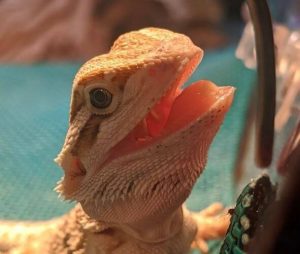
Discuss the nutritional needs specific to bearded dragons at different life stages
The nutritional requirements of a bearded dragon vary depending on its age. Juvenile beardies require higher protein levels for growth compared to adult dragons who need more fiber in their diet.
When young, opt for smaller insects like pinhead crickets or small mealworms that are easier to digest. As they grow older (around 6-8 months), you can gradually introduce larger prey items.
Calcium is critical throughout a bearded dragon’s life but is particularly important during the early stages when they experience rapid bone development. Dusting insects with a calcium supplement that contains vitamin D3 is crucial to prevent metabolic bone disease.
When it comes to plant-based foods, juvenile bearded dragons should be offered a wider variety of vegetables to promote healthy eating habits. As they mature, the emphasis can shift towards more fibrous vegetables like bell peppers and green beans to aid digestion.
Veterinary Care Cost
Regular Check-ups and Vaccinations
When it comes to owning a bearded dragon, regular veterinary care is crucial for maintaining the overall health and wellbeing of your scaly companion. Just like any other pet, bearded dragons require routine check-ups to ensure they are in optimal condition.
These check-ups often involve a physical examination to assess their body condition, skin health, and any signs of illness. Additionally, veterinarians may administer vaccinations against common diseases that can affect bearded dragons.
Importance of Routine Veterinary Care for Maintaining Your Pet’s Health
Routine veterinary care is essential for several reasons. Firstly, regular check-ups allow the veterinarian to identify any potential health issues early on, which increases the chances of successful treatment and prevents the condition from worsening. Moreover, veterinarians play a vital role in educating owners about proper husbandry practices and providing guidance on diet, habitat setup, and general care.
Bearded dragons are known for their stoic nature, often concealing signs of illness until they are quite advanced. This makes routine veterinary care all the more crucial as it enables professionals to detect subtle changes in behavior or physical appearance that may indicate an underlying problem requiring attention.
Estimate Costs Associated with Regular Visits
The cost associated with regular veterinary visits for bearded dragons can vary depending on factors such as location and specific services performed. Generally, a routine check-up can range anywhere from $50 to $100 per visit. Vaccination costs will also need to be considered separately.
It’s important to note that these estimates do not include any additional expenses related to diagnostic tests or treatments that may be necessary if your dragon falls ill or requires specialized care. To ensure that you’re prepared for potential medical expenses throughout your dragon’s life span, it is advisable to set aside a budget specifically for veterinary care.
Potential Health Issues in Bearded Dragons
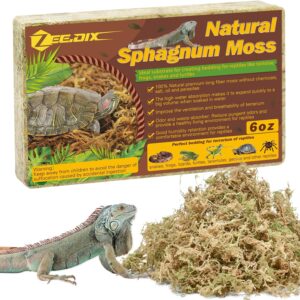 Bearded dragons are generally hardy creatures, but, like any living being, they can encounter health issues. Being aware of these potential concerns allows owners to take preventive measures and seek early treatment if necessary.
Bearded dragons are generally hardy creatures, but, like any living being, they can encounter health issues. Being aware of these potential concerns allows owners to take preventive measures and seek early treatment if necessary.
Some common health issues seen in bearded dragons include:
Metabolic Bone Disease (MBD): Often caused by a lack of proper UVB lighting or an imbalanced diet, MBD affects the dragon’s bone development and can lead to deformities or fractures.
Parasitic Infections: Bearded dragons can be susceptible to internal parasites such as coccidia or pinworms, which may require proper diagnosis and treatment by a reptile veterinarian.
Respiratory Infections: Poor husbandry practices, such as inadequate temperature or humidity regulation within the enclosure, can lead to respiratory infections in bearded dragons.
These are just a few examples of potential health issues that may arise in bearded dragons. It is imperative for owners to closely monitor their pet’s behavior and seek veterinary attention at the first sign of illness.
To Sum Up How Much Does a Bearded Dragon Cost
Caring for a bearded dragon involves more than just providing food and shelter; it also requires regular veterinary care to maintain their health and prevent potential problems. Routine check-ups not only allow veterinarians to detect any underlying issues early on but also provide valuable guidance on proper husbandry practices, ensuring that your dragon thrives in its environment.
While veterinary costs can add up over time, investing in regular care is ultimately an investment in your pet’s wellbeing and longevity. By prioritizing routine check-ups and vaccinations, you are taking proactive steps that contribute to your dragon’s quality of life.
Remember, owning a bearded dragon is a rewarding experience that comes with responsibilities. With proper care and attention – including routine veterinary visits – you can enjoy many years of companionship with these captivating and unique reptiles.
Further Reading:
- Carolina Custom Cages Terrarium Review
- 8 Best Basking Rocks for Beardie: What Is the Best Choice?
- 10 Best Thermometers for Beardie: How to Choose the Best One?
- 5 Best Beardie Lighting Setups for Beardie Lovers
- 9 Best Heat Lamps for Beardie: Natural Habitat Provided

